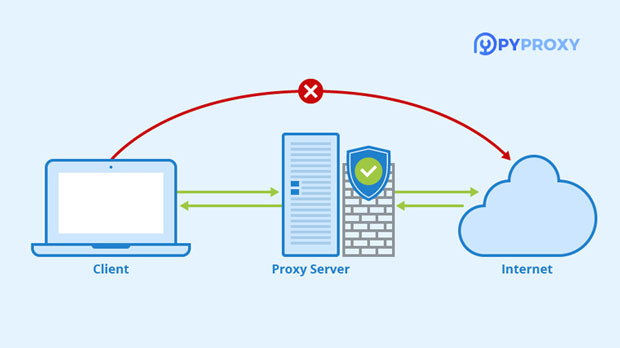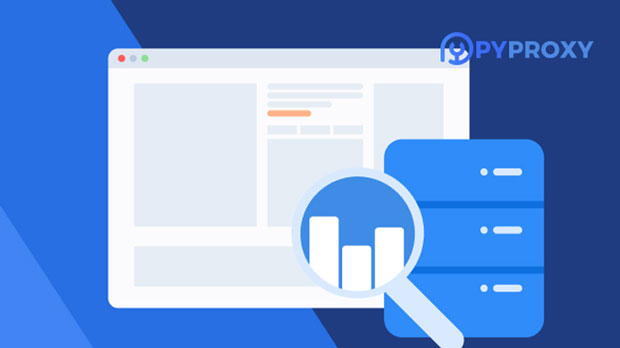In the context of high-concurrency requests, the throughput of proxies plays a crucial role in determining their overall performance. PYPROXY and Situs Proxy are two commonly used solutions for handling such requests, each offering distinct advantages and challenges. In this article, we will compare the throughput of PyProxy and Situs Proxy under high-concurrency conditions, examining their technical differences, performance metrics, and suitability for various use cases. This analysis aims to help businesses and developers choose the right proxy solution to maximize efficiency and optimize system performance. Understanding Throughput and High-Concurrency RequestsBefore delving into the comparison between PyProxy and Situs Proxy, it's essential to understand the concept of throughput and the impact of high-concurrency requests. Throughput refers to the amount of data a system can process within a given time frame. In the case of proxies, it measures how efficiently a proxy can handle incoming and outgoing traffic, especially under heavy load.High-concurrency requests refer to scenarios where multiple users or systems send requests simultaneously, placing a significant strain on the proxy's ability to manage traffic. A proxy with high throughput can handle these concurrent requests without slowing down or crashing, ensuring that all requests are processed smoothly and efficiently.Overview of PyProxyPyProxy is a lightweight proxy solution primarily used for Python-based applications. It is designed to handle high-concurrency scenarios by utilizing asynchronous programming techniques. By enabling non-blocking I/O operations, PyProxy can process multiple requests concurrently without waiting for each to finish before moving on to the next one.PyProxy's throughput is largely dependent on the efficiency of its asynchronous framework and the hardware resources available. It is particularly well-suited for scenarios where quick, real-time data handling is crucial, such as web scraping, data mining, or handling API requests from various sources.Throughput of PyProxy Under High-Concurrency RequestsWhen dealing with high-concurrency requests, PyProxy is known for its scalability. The proxy can handle thousands of concurrent connections, especially when running on high-performance servers or cloud-based infrastructure. Its throughput is typically measured in terms of requests per second (RPS) or the number of successful connections established within a specific time frame.The performance of PyProxy under high load is impressive due to its non-blocking nature. However, the actual throughput can vary depending on several factors, such as the type of requests, network latency, and the system's resources. For instance, if PyProxy is deployed on a server with limited resources or poor internet connectivity, the throughput may decrease significantly, even in high-concurrency scenarios.Overview of Situs ProxySitus Proxy, on the other hand, is a more robust solution designed for handling high-concurrency requests in complex network environments. It supports both HTTP and SOCKS protocols, providing flexibility in managing a wide range of use cases. Situs Proxy is often used in situations that require high reliability and low-latency connections, such as online gaming, financial transactions, or any scenario where downtime or delays can lead to significant issues.Situs Proxy's throughput is optimized for handling large volumes of traffic, thanks to its multi-threading capabilities. By distributing the load across multiple threads, Situs Proxy ensures that no single connection becomes a bottleneck, allowing for better overall throughput under high-concurrency conditions.Throughput of Situs Proxy Under High-Concurrency RequestsSitus Proxy's throughput is generally higher than that of PyProxy, particularly in environments where consistent, high-volume traffic is required. The multi-threading architecture allows Situs Proxy to handle large-scale requests without compromising performance, making it suitable for enterprises that rely on heavy network usage.Under high-concurrency conditions, Situs Proxy is less likely to experience slowdowns or connection timeouts, as it can efficiently manage traffic across multiple threads. Its throughput, measured in RPS or successful connections, is usually higher than PyProxy in most cases, especially when handling complex requests or large-scale systems.Performance Metrics Comparison: PyProxy vs Situs ProxyWhen comparing the performance metrics of PyProxy and Situs Proxy under high-concurrency requests, it's important to consider factors such as throughput, latency, resource usage, and scalability. Here's a breakdown of how both solutions stack up:1. Throughput: Situs Proxy tends to have higher throughput, especially in large-scale environments that demand consistent and high-volume traffic management. PyProxy is efficient but may struggle under extremely high-concurrency conditions, especially when limited hardware resources are involved.2. Latency: PyProxy generally offers lower latency due to its asynchronous nature. Requests are processed without blocking, ensuring quicker response times. Situs Proxy, while capable of handling large volumes of traffic, may experience slightly higher latency in some situations due to its reliance on multi-threading.3. Resource Usage: PyProxy is more lightweight in terms of resource consumption, making it ideal for applications with limited hardware or where minimal overhead is required. Situs Proxy, with its multi-threaded design, may consume more resources, particularly when handling a large number of concurrent connections.4. Scalability: Both PyProxy and Situs Proxy are scalable solutions, but Situs Proxy has the edge in environments where massive traffic volume is expected. PyProxy, while scalable, may require additional configuration and resources to maintain optimal performance under extremely high-concurrency conditions.Use Case Suitability: When to Choose PyProxy vs Situs ProxyChoosing between PyProxy and Situs Proxy depends on your specific use case and the scale of traffic you're handling. - PyProxy is ideal for applications where real-time data handling and low latency are crucial. It is well-suited for smaller-scale operations, such as web scraping, API management, or situations with moderate traffic volumes. If you're working with Python-based applications and need an efficient, asynchronous proxy, PyProxy is a strong contender.- Situs Proxy is the better choice for large-scale, high-concurrency environments where reliability and high throughput are essential. If you're handling critical systems that require robust performance, such as financial applications, online gaming, or enterprise-level data processing, Situs Proxy is the more reliable option. Its ability to handle massive traffic volumes and its multi-threading capabilities make it the go-to solution for high-demand applications.In conclusion, both PyProxy and Situs Proxy offer unique advantages in high-concurrency scenarios. PyProxy is a lightweight, asynchronous proxy suitable for smaller-scale applications, while Situs Proxy excels in large-scale environments requiring high throughput and reliability. The decision between the two should be based on the specific needs of the application, the scale of traffic, and the performance requirements. By understanding the strengths and weaknesses of each proxy solution, businesses can make an informed choice to optimize their system performance and ensure smooth, high-concurrency operations.
Sep 16, 2025



































































